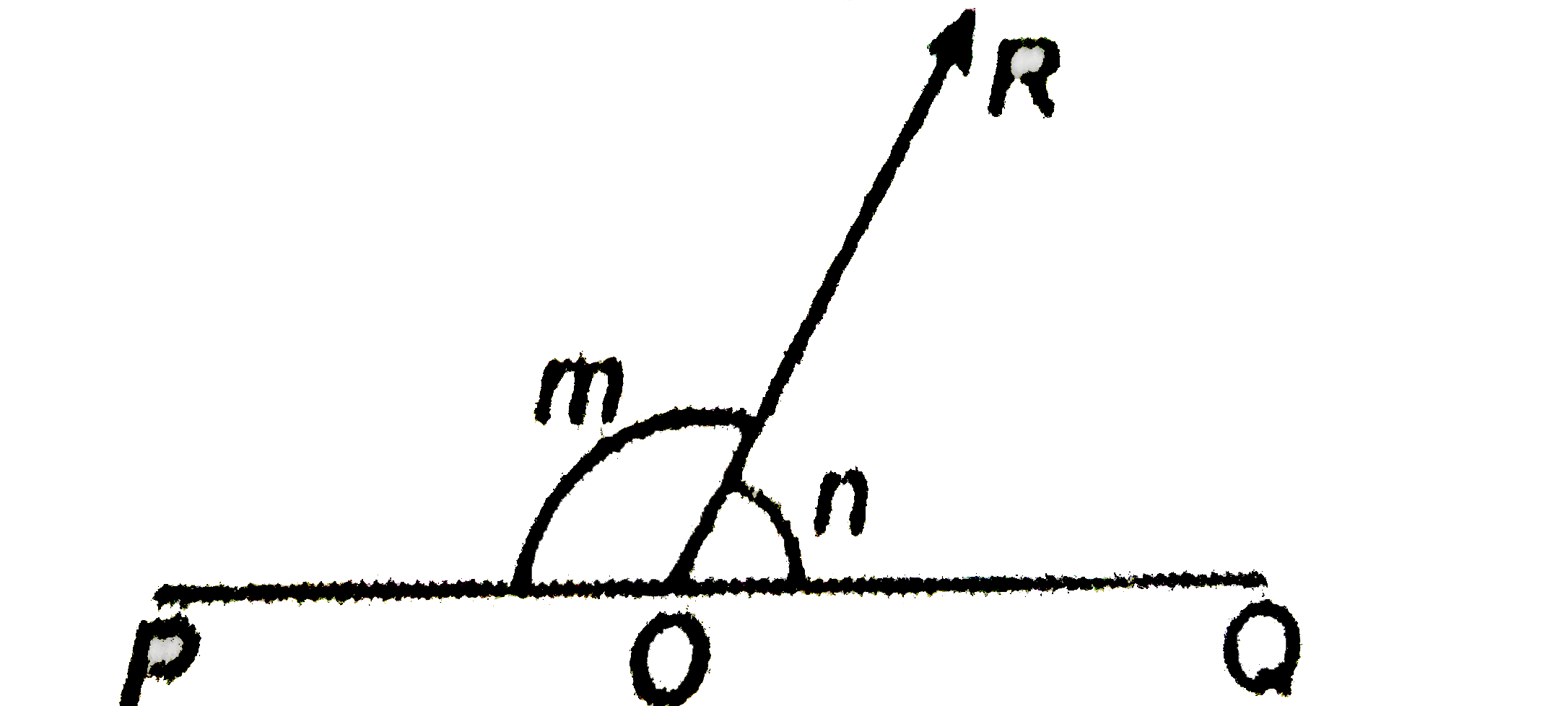The three initial and final position of a man on the X-axis are given as
(i) (−8m,7m) (ii) (7m,−3m)
(iii) (−7m,3m)
Which pair gives the negative displacement ?
(i)
(ii)
(iii)
(i) and (iii)
The correct Answer is:B
To find which pair of positions gives a negative displacement, we need to calculate the displacement for each pair of initial and final positions. Displacement is defined as the difference between the final position and the initial position.
1. Identify the pairs of positions:
- Pair 1: Initial position = -8m, Final position = 7m
- Pair 2: Initial position = 7m, Final position = -3m
- Pair 3: Initial position = -7m, Final position = 3m
2. Calculate the displacement for each pair:
For Pair 1:
- Initial position (x₁) = -8m
- Final position (x₂) = 7m
- Displacement (Δx) = x₂ - x₁ = 7m - (-8m) = 7m + 8m = 15m
- Result: Positive displacement (15m)
For Pair 2:
- Initial position (x₁) = 7m
- Final position (x₂) = -3m
- Displacement (Δx) = x₂ - x₁ = -3m - 7m = -10m
- Result: Negative displacement (-10m)
For Pair 3:
- Initial position (x₁) = -7m
- Final position (x₂) = 3m
- Displacement (Δx) = x₂ - x₁ = 3m - (-7m) = 3m + 7m = 10m
- Result: Positive displacement (10m)
3. Conclusion:
- The only pair that gives a negative displacement is Pair 2: (7m, -3m) with a displacement of -10m.
Final Answer:
The pair that gives the negative displacement is (7m, -3m).
---
- Pair 1: Initial position = -8m, Final position = 7m
- Pair 2: Initial position = 7m, Final position = -3m
- Pair 3: Initial position = -7m, Final position = 3m
- Initial position (x₁) = -8m
- Final position (x₂) = 7m
- Displacement (Δx) = x₂ - x₁ = 7m - (-8m) = 7m + 8m = 15m
- Result: Positive displacement (15m)
- Initial position (x₁) = 7m
- Final position (x₂) = -3m
- Displacement (Δx) = x₂ - x₁ = -3m - 7m = -10m
- Result: Negative displacement (-10m)
- Initial position (x₁) = -7m
- Final position (x₂) = 3m
- Displacement (Δx) = x₂ - x₁ = 3m - (-7m) = 3m + 7m = 10m
- Result: Positive displacement (10m)
- The only pair that gives a negative displacement is Pair 2: (7m, -3m) with a displacement of -10m.
The pair that gives the negative displacement is (7m, -3m).
Topper's Solved these Questions
- MOTION IN A PLANEBOOK - DC PANDEY ENGLISHCHAPTER - MOTION IN A PLANEEXERCISE - Check point 3.2
10 Videos
- MOTION IN A PLANEBOOK - DC PANDEY ENGLISHCHAPTER - MOTION IN A PLANEEXERCISE - Check point 3.3
10 Videos
- MOTION IN A PLANEBOOK - DC PANDEY ENGLISHCHAPTER - MOTION IN A PLANEEXERCISE - (C )Medical entrances gallery
32 Videos
- MOTIONBOOK - DC PANDEY ENGLISHCHAPTER - MOTIONEXERCISE - Medical entrances gallery
19 Videos
- PROJECTILE MOTIONBOOK - DC PANDEY ENGLISHCHAPTER - PROJECTILE MOTIONEXERCISE - Level - 2 Subjective
10 Videos
Similar Questions
Knowledge Check
The three initial and final positions of a man on the x-axis are given as
(i) (-3 m, 7 m) (ii) (7 m, -3 m)
(iii) (-7 m, 3 m)A(i)B(ii)C(iii)Di) and iii)A bird flies from (-3m, 4m, -3 m) to (7m, -2m, -3m) in the xyz-coordinates. The bird's displacement vector is given by
A(4ˆi+2ˆj−6ˆk)B(10ˆi−6ˆj)C(4ˆi−2ˆj)D(10ˆi+6ˆj−6ˆk)
The position vectors of two balls are given by
→r1=2(m)i+7(m)j
→r2=−2(m)i+4(m)j
What will be the distance between the two balls?
View SolutionThe position vectors of two balls are given by
→r1=2(m)i+7(m)j
→r2=−2(m)i+4(m)j
What will be the distance between the two balls?
View SolutionIf m=2 find the value of : (i) m−2 (ii) 3m−5 (iii) 9−5m (iv) 3m2−2m−7
View SolutionExpress as metres (m) using decimals: (i) 15cm (ii) 8cm (iii) 135cm (iv) 3m 65cm
View SolutionA stone is to be thrown so as to cover a horizontal distance f 3m. If the velocity of the projectile is 7 m/s, find :
(a) the angle at which is must be thrown.
(b) the largest horizontal displacement that is possible speed of 7 m/s.
View SolutionIn the adjoining figure, POQ is a straight line. Find the m and n when
(i) m−n=60∘
(ii) m:n=7.5
View Solution
